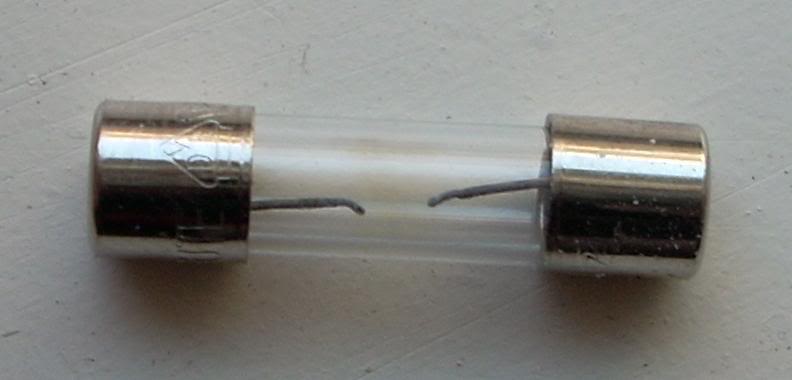I just committed one of the greatest sins ever in the world of audio amplification. I replaced both the 3 amp fuses in the output phases of my 39 year old Audionics of Oregon CC-2 power amplifier with fuses rated for 4 amps. Either channel would blow a fuse randomly, not constantly on just one side as one would suspect of faulty circuitry. The saying “you gotta know the rules before you can break them” comes to mind, and I’ll let you know if I eat these words later on.
So why would I so such a thing, you may ask? Well, I know these amplifiers very well. When in high school, I worked summers at Audionics of Oregon assembling them, so not in an electrical engineering capacity by any stretch but I still got to know a great deal in this small manufacturing operation just by hanging out with the engineers at lunch and chatting with the service technicians on breaks. The venerable CC-2 is a fine, reliable power amplifier. It’s achilles heel has always been its relative intolerance for driving low impedance loads, it simply wasn’t designed with such design precepts in mind. It’s a high slew rate amp, and that makes in the perfect match for my Kef 104/2 box speakers (The venerable Kef 104/2). But, my Kef’s run at the moderately low nominal load impedance of 4 ohms, which is less than optimal for my CC-2 power amps.
But… I used to drive a pair of far lower impedance and far more demanding Magneplanar Tympani IDs (post) with CC-2s. I even bridged them into mono on occasion, which taxes the power amplifier’s low impedance capabilities even further. But I found far greater benefit from the luxury of owning two CC-2s was to drive my Maggies passively bi-amped (Why bi-amping isn’t always what you may think). Did I blow fuses?… Yep, plenty. The CC-2 is known for having a very conservative fuse rating. Why?… AofO had a terrible failure rate on their previous generation PZ-3 power amplifiers. So much so that they were losing money due to the warranty returns. So I think the conservative fuse rating of the CC-2 was a sort of “knee-jerk” reaction to their history with the PZ-3.
I honestly can’t remember if I put higher rated fuses in the output phases of my CC-2s back when I first owned them in the 70s, but I’d be very surprised if I didn’t. If a fuse blows immediately when you power up your amplifier, you have a serious problem. If, however, your are happily enjoying your music at your usual listening levels w/o clipping and your amplifier heats up and eventually blows a fuse, you aren’t looking at an immediately catastrophic fault, but a far more insidious one.
I know from experience that it’s normal for my CC-2s get crazy hot (almost like a Class A amp) and they love it that way. All day, every day. My theory is that the fuses amperage rating varies with heat and as the fuses heat up their amperage rating goes down and they eventually blow. That’s my story and I’m sticking to it 😉 And, I’ve got a spare CC-2 should I blow a transistor or two, which aren’t so easily replaced as fuses are. That’s why I bought a couple CC-2s – because parts would be neigh on impossible to find and I know I’ll never find a better (sound quality wise) modern day replacement to drive my Kef’s, at least without a price tag well into 5 digits.
I’ve blown my share of power amps in my day. And I recently blew two sup-par vintage amps driving my Kef’s before I picked up the CC-2s. Back in the 80s I owned a Harmon Kardon Citation series power amp (which was built like a tank) driving a pair of Dalquist DQ-10s and came out of the shower to discover the cross-over network was in flames. I confess, I do like to crank it and yes I was guilty of cranking the music in the living room to listen to while in the shower.
It was far too late for my beloved DQ-10s (I would own a pair of those again in a heartbeat if I had the room for them), and the Citation was also toast. I wasn’t really in the mood for any DIY tinkering at the time, so I called the insurance company and they covered the smoke damages to thehouse (new paint and carpet), packed up the amp and speakers, hauled them away, and told me to replace them with pretty much anything comparable I wanted. I later got a check in the mail refunding my deductible, which told me they had successfully subrogated and had been paid back from either Harmon Kardon or Dalquist due to a manufacturing defect causing the fire, which surprised me.
While I don’t crank music in the living room to listen to in the shower anymore, I do love to crank it when I’m in the listening chair, especially classic rock. I know when my amp is breaking a sweat and when it’s not. I’ve pushed my CC-2s to the point where they are too hot to even place my hand on them, but I know they are OK. When they blow fuses randomly at moderate listening levels I also know they aren’t at fault, the (under rated) the fuse is.

